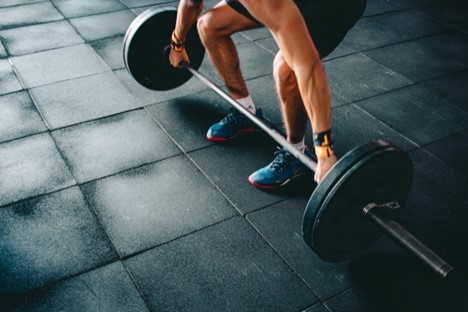POWERLIFT TRAINING
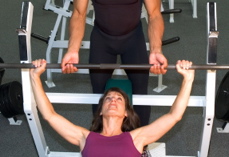
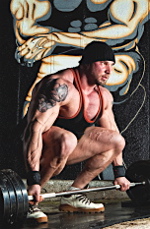
There are many people that I consider to be very spiritually sound. I know I can count on them at any point in my life to help pull me through whatever I am facing. I know they have the perfect Bible passage or words of encouragement on the tip of their tongue.
Unfortunately there are also many people that allow their physical health to deteriorate. I believe we were created in God’s image to be strong and not weak. He gave us only one body and expects us to take care of it until the day we die.
Your body is a temple and should be treated as such. My buddy Frankie has a great line. He says, “The goal is better, each day” Bit by bit. Better each day.
I personally like powerlifting (bench press, squat, and deadlift). As I type this, I have a powerlifting meet tomorrow at 11am. Even if you have no interest in powerlifting competitions, this is a great way to add strength and more muscle to your body. I’ve used this approach with other athletes, and it works great.
THE POWERLIFTS
The powerlifts are the bench press, squat and deadlift. If you want to be strong overall, these exercises are a great place to start. I find it is best to focus on one for a four to six week period, and then switch to the next one as the main focus.
I have a routine I use to help improve my deadlift. The approach is to keep the QUALITY as high as possible. One simple way to ensure this is to measure your range of motion.
HOW TO TEST “RANGE OF MOTION”
Stand up – nice and tall. Imagine you are melting down forward, bringing your hands closer to the ground in front of your legs. Go slow. Stop where you feel any tension.
Mark that spot. This is your baseline.
Now, pick your favorite exercise and do a few reps. Stand up, and repeat the same test again. Did you get further before you felt any tension?
If you got further, then that is a good exercise for you to improve your range of motion at this time. If not, try a different exercise.
This will be your guide to determine which exercise is best for YOUR body in improving your range of motion.
THE THREE POWERLIFTS: THE BASICS OF HOW TO DO THEM
While this will not replace a qualified coach helping you, it will get you started. Once you are feeling more comfortable with the lifts you can then learn all sorts of details, but these main points will get you going right away.
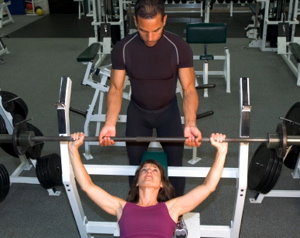 BENCH PRESS
BENCH PRESS
Sit on the end of the bench and make sure your feet are the same distance apart from the bench. Lie down and put both hands near your butt to make sure it is even on the bench. Pull your shoulder blades underneath you and slide towards your feet a bit, but don’t move your feet again, keep them in the same place. Grab the bar, making sure to wrap your thumbs around it. Have a lifting partner hand you the bar (most standard bars weigh 45 pounds unloaded). Lower it to about mid to lower chest. Push it back up to the top.
INSIDER TIPS: Use your eyes (not your head) to watch the path of the bar. Make sure your feet do not move and keep them on the floor. No happy feet are allowed.
The rest of your body should not move – only your arms should move.
 SQUAT
SQUAT
Find a squat with a free standing bar (not a Smith press). You will have to play around with foot position a bit (adjust and explore how different positions affect your squat). Generally you want a stance where your feet are positioned wider you’re your shoulder width, angled at about 45 degrees. When performing the squat walk up to the bar and grab it just inside the supports. Position yourself evenly between both sides. Duck under the bar and place it on the top part of your shoulder blades across the back of your shoulders (some people attach a specially designed pad to the bar for comfort). Turn your head to the left and right to make sure the bar is centered and even. Bring your feet under the bar, outside shoulder width. Stand up so you are holding the bar and weight on your back. Take a few steps back (the fewer steps you take the better). Line up your feet again, even on both sides. Squat down (hence the name) and stand back up (The further your squatting depth increases the greater potential for injury.) All joints should move at the same speed, so your ankles, knees and hips should be moving at the same rate. Keep your head neutral the whole time.
INSIDER TIPS: If it feels like the bar wants to slide off your back, put your hands closer in on the bar. Don’t wear shoes with a high heel, as they can be unstable and cause issues. Squatting without shoes is much better (check with your gym to see if you need special permission as many require shoes to comply with safety requirements).
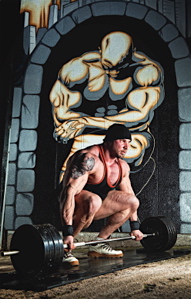 CONVENTIONAL DEADLIFT
CONVENTIONAL DEADLIFT
Walk up to a bar on the floor that has an appropriate amount of weight on it for you. Line up your feet straight ahead, about shoulder width apart. Bend down to grab the bar, arms just outside shoulders. Pull your hips down toward the bar. There should be a straight line from the middle of your shoulder blade through your arms to the bar. Keep your head neutral and straight. Stand up while holding on to the bar. All your joints should move at the same speed. Your knees should not reach the top before your hips.
INSIDER TIPS: Like the squat, no shoes or very flat bottom shoes are best. If you use flat shoes, you can line up the bar with the laces and make sure it is even on both side. For most, the bar should be around the bottom 1-2 eyelets of your shoe, but it will vary. I prefer most to start with both palms down grip, but you can play around with a mixed grip where one hand is facing down and one is facing up. If you do this, make sure to switch hands too. So set one may be left hand up, right hand down then set 2 is right hand up, left hands down, etc. At the bottom of the lift, your arms should be next to your knees.
A SAMPLE TRAINING TEMPLATE
Let’s say you want to work on your deadlift. Each training day you would test three deadlift variations (testing as described above in the How To Test Range Of Motion section). Try testing three forms: 1. conventional deadlift (feet shoulder width, arms at your sides). 2. sumo style (feet wider than shoulder width, arms inside your legs). 3. trap bar deadlifts (a special made bar goes around you to hold the weight vs a bar in front).
Put a light weight on the bar and test each version. The version that shows the greatest range of motion is the one to go with that day.
Each time record the following: 1. Exercise (one of the three above). 2. Weight (weight on the bar). 3. Reps (how many repetitions you can do in perfect form).
4. Time (how long it takes to perform all of your sets for that exercise).
From this you will calculate: 1. Volume (reps X weight). 2. Density (volume / time).
3. Weight.
I know this seems like a bit much, but the old saying goes “what gets measured gets managed.” Get a simple notebook to record this every time. The goal, over time, is to add more volume, density and weight in any order. This is a powerful stimulus for the body to get stronger and add more muscle. Each time you are going beyond what you have done before, getting better, bit by bit, every training session.

May 7, 2010: Tested deadlift variations of conventional, sumo and reverse band (bands are hooked up from the top of a rack to the bar so they take some of the load off the bottom of the lift). Reverse band deadlifts tested the best. I Started at 135 lbs—tested well. 225 –tested well again so I added more weight, 275—good, 315—good, 365—good, 405—good but speed dropped off a bit and it did not look easy. I dropped down to 385 lbs and tested well, great speed and looked easy. I started the stop watch and did 385 x 3 reps for 4 sets. I retested my range of motion after each set. I stopped the set at the first sign of excess tension (so if you are making a sour lemon face, you need to stop before that happens). At this weight that was 3 reps each time. You should feel like you are stopping 1-3 reps before failure. Total time 14:13. It was a personal record (PR) for volume and density for me on this exercise. I did some kettlebell lifting following the same template and called it a day.
WHAT I HAVE LEARNED FROM MY TRAINING JOURNAL
I normally deadlift four days per week, but I do different versions of the deadlift. It is rare that I deadlift with a conventional style more than once per week. Most of my work is volume based, so I do more work at a lower weight. If testing goes well, then I keep adding more weight and work up to a heavy single rep, but this is only about once every two to three weeks. This is just what I learned about MY body and gives you a starting point, but yours will be different.
SUMMING IT ALL UP
This is just an introduction to help you set up a brutally effective, but simple program based on feedback from your body to add strength and muscle. Sign up to learn more about biofeedback testing.
Your body is a temple and God wants all of us to be strong. Go now and put this into practice and you will be amazed at the results. For now, I’m off to my powerlifting meet!





